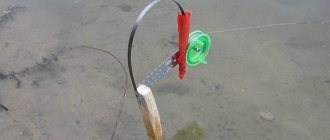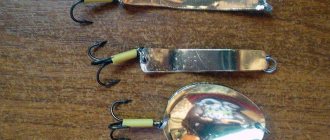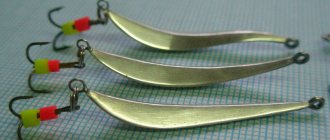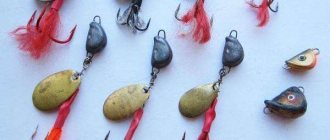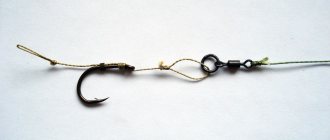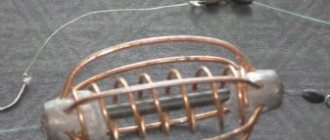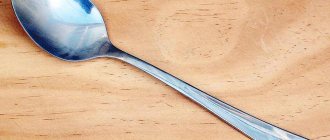Recommendations
Here are some useful tips that will make it even easier to make a chair from wood with your own hands. To begin with, let's say that before creating any structure made of wood, you should carefully think about how it will roughly look and what you want to see it as. This will allow you to at least approximately determine how much of a particular material you need.
Another important aspect is that you should not neglect such a thing as drawings. For some reason, many people do not pay enough attention to them, which is why they end up with crooked chairs and armchairs. In this matter, everything should be thought through to the smallest detail and the parameters of each detail should be checked. It would not be superfluous to say that it would be better to use a circular saw for cutting longitudinal parts, and a jigsaw for transverse parts.
Another important issue concerns the connection of the chair elements. Everything is quite simple here. In connections where the main load occurs, it is better to use self-tapping screws or self-tapping screws. But in other cases, you can use adhesive or chopsticks made of wood. Choppers can also be used to secure the upper parts.
An important point will be the selection of materials for processing. But here everything will depend on how high-quality the wood is used. If it is “clean” and has no defects, then it will be enough to treat it with stain and apply varnish. But if there are stains on it and there are some defects, then you should putty them, then cover them with a primer and only then paint. Another important point is that you should not paint the wood right away. It must be pre-treated with drying oil. Otherwise, it will quickly be absorbed into the surface. Then there will be bald spots, which will ruin the appearance of the chair.
Do-it-yourself repair of chairs and beds
The base of the seat and the back are fixed in their original position. To make the task easier, you can use glue or tape.
When you have assembled the mechanism, make marks for drilling.
DIY corner cabinet: 80 photo ideas and video description of how and what to make a cabinet from. Main manufacturing stages and best design projectsDo-it-yourself wardrobe for the balcony - 80 photos of how to make a balcony wardrobe from various materials with your own hands
Do-it-yourself wardrobe - a detailed description of how to make and assemble a wardrobe with your own hands at home (110 photos + video)
We recommend using small diameter but long screws. They are much easier to work with. The parts are then fastened together and filled with sliding oil.
Frame
Let's call this stage the chair frame.
Of course, almost the entire skeleton will be covered with foam rubber and fabric. Only part of the legs will remain visible.
The back legs are the most important parts of a wooden chair because you need to make them at some angle.
Without thinking for a long time, to make the back part of the chair structure, we took an ordinary dining chair that was available, although it did not have a seat. But he was well suited for the role of template. You can take some old grandma's chair.
Markings were made on a 50x150 board.
Be sure to mark the level of the seat of the chair, make it the same as for the chair. In this case it was approximately 410 mm from the floor.
Use a jigsaw to cut out the legs of a homemade fireplace chair.
Then we used the finished part as a template to make three more legs, because we are making two chairs at once with our own hands from scrap materials.
The front legs will be straight and square - 55x55 mm. To obtain such a cross-section, you can glue the boards together and then saw them to the required size. We glued 2 pairs of 2 boards, 120 mm wide and 30 mm thick.
While the front legs were drying, we finished assembling the back frame - we made the upper part, the upper part of which has a slight rounding. Then we made the rear seat support bar.
We assembled all parts of the back using self-tapping screws 60 mm long. Before tightening the screws, it is necessary to apply wood glue to all connections and drill mounting holes.
We continue to make our wooden chair with our own hands. The blanks for the front legs were glued together and dried. We saw them down to the required size of 55×55 mm.
Place them on the backrest structure and check the length of the legs and whether they lie on the same surface so that the chair does not wobble during use. If the lengths are different, then align them.
The ends of the front legs need to be narrowed. To do this, make small bevels on all four sides.
Make side bars 400 mm long and secure them as shown in the figure below. For better fixation, it is advisable to use screwing screws at an angle, having previously made auxiliary holes.
Install the front seat support bar. It is the same length as the back bar.
To make the English armchair with ears strong, we prepared four parts, the ends of which were cut at an angle of 45 degrees. We applied glue and secured them with screws in the corners of the frame.
Then we cut a piece of plywood to fit the size of the seat. Plywood thickness 18 mm. We secured them with self-tapping screws, after applying glue.
If you want to make the seat softer, then instead of plywood you need to use furniture textile tapes. We will use such ribbons when making the backrest.
The chair must have armrests, otherwise it will be a chair. Let's look at the stages of their manufacture. The front post and the armrest crossbar must be installed at a right angle. Determine the height of the armrest yourself, it will be 200-300 mm. The cross-section of the bars is square - 50×50 mm.
Secure them with self-tapping screws, screwing them in at an angle.
A classic chair should have “ears”. To make them, prepare a board and a block of the same thickness for each side. Study all the photographs of the “ear” making process. Connect the blanks with self-tapping screws, then draw a curve and cut along the lines. Attach the finished assembly to the back and armrest.
You may think that making a chair with your own hands is not such an easy task, but I want to assure you that the hardest part is behind us.
Before we start upholstering, let's strengthen the frame a little - add crossbars to the back and armrests, as shown in the photo.
Let's add a strip to level the surface of the armrest, round it and sand it.
Folding chairs with backrest
To make this copy, prepare in advance:
Hallways 2021: TOP-200 photos of the best new products and modern design. Options for the ideal combination of color and style of furniture in the hallway- DIY stool: manufacturing methods and instructions for creating simple and stylish models (90 photo ideas)
- Do-it-yourself door finishing: 115 photos of the best options for entrance and interior doors
- two bars of legs 74 and 47 cm long, respectively;
- 5-8 flat slats 32cm long;
- 3 bars 43 cm each;
- fastener
Let's move on to the collection. Let's start with making the seat. To do this, mount the slats on the support bars using short self-tapping screws at an equal distance from each other.
Let's move on to assembling the frame. Its main components are the protruding legs and back of our wooden masterpiece. We select the part where the back will be and attach slats to it to support the back; in the lower part, one crossbar is enough for greater stability. The rear legs also have crossbars at the top and bottom.
So, we have two elements that need to be fastened together. To do this, use bolts of any convenient diameter, drill through holes in both frames and fasten them together. We connect the front and back frames of the chair with bolts and nuts.
Advice: do not tighten the nuts too tightly, let the inner frame rotate freely, but not dangle.
You've probably already seen similar photos of a folding chair, and now this convenient and practical piece of furniture will appear in your home.
Drawing up a drawing to create a folding chair with your own hands
- Back height – from 100 cm;
- The seat is at least 48 cm, if the chair folds out into a bed - at least 60 cm;
- The total width of the furniture including armrests is from 80 cm;
- Length when unfolded 180–190;
- Depth for bed models is 50–60 cm, for standard ones 45-60.
The following is an algorithm for drawing up a drawing for a chair-bed. This is a universal option for home and garden: when folded, it takes up little space, and when disassembled, it creates a cozy nook for sleeping or daytime relaxation. If the furniture is intended for summer outdoor recreation, it can not be sheathed, but can be used with removable cushions or covered with water-repellent material.
Drawing Features:
- The sleeping area is divided into three equal sections. When folded, they form a single square block. Dimensions are selected according to anthropometric data.
- The design is equipped with additional legs, which are hidden when folded. Options with 2 legs are possible, but for greater stability it is better to make 4: a pair at the end and a pair in the middle of the bed.
The rest is standard - two sides, armrests, back. To prevent the sleeping place from breaking under the weight of the owner, a frame of slats must be made.
Portable lounge chair
The durable, lightweight chair is quickly assembled and disassembled. It is convenient to take it with you outdoors. The model is so easy to make that it is suitable even for novice craftsmen.
The collapsible chair consists of 2 parts:
- backrest covered with dense, wear-resistant fabric;
- wooden seat.
To create a chair, it is recommended to take cherry boards for the upper crosspieces and seat, as well as maple for the legs and supporting parts. You can also use pine wood.
In addition to tools, the following materials are used:
- 2 legs for the backrest measuring 20x40x800mm;
- 2 legs for the seat - 20x40x560mm;
- 2 lower crossbars - 10x50x380mm;
- 1 top crossbar - 10x40x380mm;
- 1 seat crossbar - 20x40x300mm;
- 5 slats - 20x40x400mm;
- piece of material - 600x500mm.
The procedure for assembling a portable sun lounger is shown in the diagram.
First, the parts are connected using self-tapping screws and a screwdriver.
The workpiece is processed and varnished.
While the frame dries, the fabric is folded and stitched. Then it is nailed using staples and a construction stapler to a wooden piece.
We connect the back and seat of the chaise lounge.
Enjoying your holiday in your new armchair.
Pay attention to another interesting chaise lounge model in the video
DIY chair-bed: step-by-step instructions
Operating conditions and the dimensions of the room dictate a certain installation of the mechanism for folding out the sofa. There are several ways:
- retractable mechanism;
- Eurobook;
- click-clack;
- dolphin.
The retractable system is the optimal solution for novice furniture makers. It is the most reliable in operation. To transform the chair into a bed, you need to pull two parts forward and lower the backrest into the free space. Bolts and piano hinges are used to fasten the elements. Using this mechanism you can also get a box located at the bottom of the box.
The disadvantages include the fact that when assembled, a chair with a retractable system looks bulky, but the strength and presence of a linen drawer compensate for this disadvantage.
Next, taking into account the drawing, all elements of the sleeping part and the body of the chair are cut out. You need to cut four squares from a plywood sheet. The folding part will require 3 pieces, and 1 is used for the backrest. Sawing is done with a wood hacksaw or an electric jigsaw.
Timber cutting:
- 4 things. for legs;
- 7 pcs. for crossbars;
- 6 pcs. for the longitudinal part of the bed.
Mark the connection points of all elements and make holes using an electric drill. Armrests are cut out of fiberboard and bolted to the main structure. All parts are fastened with furniture screws into pre-drilled holes. Batting is glued to the sides, back, and all elements of the berth.
Next, the furniture is upholstered. There are many cladding options. As a rule, flock, velor, jacquard or chenille are chosen.
The material is cut taking into account the thickness of the filler and the dimensions of all structural elements. Each part is covered with a blank made of the selected material and fixed with a furniture stapler. The case is ready, to operate the product you need to connect all the parts.
You can also make frameless chair-beds. These models are most often chosen by young people. The furniture is reliable and follows fashion trends. The frameless product has no rigid elements; it is a transformer made of pillows.
Having made several of these chairs, it becomes possible to combine them. You can make a sofa and move it around the room, placing it near the TV. No carpentry work is required; for production you need scissors, a sewing machine, chalk, and a tape measure.
The chair-bed is made of foam rubber, which has a thickness of at least 12 cm. The sheets are glued in pairs with PVA glue. Afterwards, the sheets are cut out using a tape measure and chalk, cut out clearly according to the markings with scissors, and the blanks are obtained:
- rectangle 30x90 cm - 2 pieces;
- rectangle 40x90 cm – 1 piece;
- square 90x90 cm - 2 pieces.
The cut out elements have a thickness of 24 cm. The next stage is cutting the material. When doing the work, the main thing is not to forget about the seam allowances; they are made at least 3 cm, in places where the zipper is sewn in - an allowance of at least 4 cm.
Sew two types of covers:
- Rough ones made of cheap material.
- Elegant from high-quality textiles.
By making your own chair-bed, you can get functional and practical furniture that meets all the necessary requirements and at the same time with low material costs. Using all the recommendations in practice, you will have a comfortable place to relax.
Required materials and tools
The question of how to make a chair bed with your own hands should be approached creatively, but economically. In the apartment and at the dacha you can find the necessary materials and equipment.
To assemble upholstered wooden furniture you will need the following tools:
- roulette;
- stationery knife;
- hacksaw;
- plane;
- square;
- electric drill;
- screwdriver;
- construction stapler;
- scissors;
- marker;
- sewing machine.
To make a folding chair with a soft part made of foam rubber, the following materials are needed:
- wooden beam;
- chipboard;
- plywood;
- PVA glue;
- acrylic paint or wood varnish;
- sandpaper;
- screws;
- bolts with nuts;
- upholstery fabric;
- metal loops;
- detachable zippers;
- rollers.
This is a short list of necessary accessories. Hardware for connecting parts of the chair into a single structure can be purchased in specialized stores.
Attention! Buy upholstery material that is dense and strong. It should last for many years, subject to constant mechanical stress and regular washing.
Wooden bed
You can make a folding bed from a single piece of wood or chipboard, and with a headrest. For this you need:
- beams of the same section as in the previous case;
- thick plywood, wooden board or chipboard according to the size of the bed;
- lifting mechanism (stepping);
- door hinges for cabinets.
The main manufacturing steps will be the same as in the previous case, only, of course, there is no need to stretch any fabric anywhere. First you need to saw off a piece of chipboard for the headrest:
- Sand all the details.
- Saturate the beams with stain and varnish - this is not necessary with the stock.
- Make a sawhorse as described in the previous case and attach the stock to it.
- Attach the headrest using several door hinges (you need at least two, but 3 or 4 is better).
- Attach a stepper lifting mechanism to the side bars of the bed and headrest (a strip or half-ring with recesses is attached to the headrest, and a pin to the bed).
Mattress
For a folding bed made of fabric, a mattress is not needed, but a pillow is needed, since the described design does not have a headrest. However, the bed sags slightly, taking the shape of the body, so it is possible that there will be no need to put anything under the head. But not everyone can sleep on a wooden bed without a mattress.
You can buy a standard mattress or make it yourself. Suitable covering fabrics:
- leather and leatherette;
- calico;
- curtain fabric of medium hardness;
- upholstery fabric;
- microfiber.
As for the filler, different options are possible. Mattresses made from sheet foam rubber are popular, but they do not last long, and sleeping on them every day is not particularly useful. You can use sea grass, polyurethane and other materials that are now found in large quantities in stores.
Swing seats
It is much easier to build a seat for a children's swing than it seems at first glance - you can use any available materials and objects.
Tire swing
Such a swing will require a minimum of time and costs:
- make 4 holes in the upper part of the horizontal tire;
- secure the metal hooks in the holes using washers and nuts;
- hang the tire seat from the frame using chains or ropes.
Hoop swing
You will need a durable metal hoop. A small-diameter hoop will allow you to make a comfortable seat; a large hoop is an excellent option for making a swing-bed:
- wrap the hoop with a piece of batting, foam rubber or several layers of soft material, and then cover it with durable fabric;
- attach metal rings to the hoop in several places - they need to be positioned symmetrically;
- thread a rope through the rings and weave a “web”;
- Attach chain or rope hangers to the 4 rings and secure them to the frame.
Canvas swing
It’s easy to make such a swing:
- fold the tarpaulin in several layers and cut out a rectangular blank - its size depends on the age and weight of the child;
- sew the workpiece around the perimeter;
- bend strong metal rods in the shape of a triangle, having previously strung the outermost link of chain hangers onto them;
- secure the triangles along the edges of the tarp with rivets or washers and nuts.
Swing from an old chair
A metal or durable wooden chair will do:
- saw off the legs of the chair;
- attach metal rings or hooks to the sides of the wooden seat - attach chains or ropes to them and hang them from the frame;
- Rigid rods can be welded to the seat of a chair with a metal frame and secured to the frame using bearings.
Plastic swing
Visit any store that sells sports equipment - here you will find ready-made seats for children's swings. Plastic models will delight you with their price, wide range of colors, lightness and ergonomics.
For small toddlers, a plastic seat with a limiter between the legs is suitable. For older children, you can choose a simple rectangular or oval seat. Some plastic seats are sold complete with ropes, others come with pre-made holes - you will need to insert the rope into them.
Wooden swing
The simplest option is to take a piece of strong rectangular board, make holes along the edges and insert a rope into them. Craftsmen don’t have to stop there: the wooden seat can be equipped with a backrest and armrests.
Metal swing
For those who have a welding machine on their farm, it will be easy to make a metal seat from small-diameter profile pipes - it will delight you with its durability and strength. This can be a simple oval or rectangular rocking chair, or a comfortable option with a back and armrests.
After completing the welding work, you need to trim all the joints, check the quality of the seams, remove burrs and paint the workpiece with bright paint. To make the child comfortable, the seat frame is made of metal and complemented with a pad of a suitable size made of sanded wood or plastic.
How to make frameless furniture
A chair without stiffeners can be made from dense sheet foam rubber 10 mm thick (an alternative is polyurethane foam, struttofiber or natural latex slabs) and high-quality, but simple textiles. Additionally, 7 lightning bolts will be required for these purposes. Their length and number depend on the number of selected unfolding elements. You will also need braid (for edging the edges, selected at will), PVA glue for gluing rectangles or squares of foam rubber, strong threads and a sewing machine. The work is carried out according to a simple scheme:
- Squares or rectangles with a width of 80 mm and a length of 20 to 80 mm are cut out of a single piece of foam rubber (dimensions may vary depending on the purpose of the chair).
- The parts are coated with glue, connected and left alone until completely dry.
- Textiles are cut with a 1.5–3 cm margin for seam allowances. In areas where zippers are sewn in, the allowance is made maximum.
- The covers are sewn together by machine. Zippers are inserted in the center of the sides to be hidden after the chair is laid out. Experienced craftsmen recommend immediately making several types of covers from different textiles, including rough and replaceable outer ones.
- Foam rubber blanks are inserted into the covers, and an inconspicuous fabric handle is sewn to one of the sides.
- The parts are connected using strips of fabric, zippers or Velcro. The method of fastening the chair elements is thought out in advance, the gap between them is kept as small as possible. Its size has a direct impact on the visual appeal of the chair and the density of the individual pillows.
Characteristics of folding transforming beds, placement options
The given instructions allow you to make yourself a chair-bed, a sofa or similar transforming structures from type-set soft elements. The simplest alternative to such furniture is a sewn quilted blanket (futon) or a bean bag chair, made in the shape of a large rectangle. When folded, they are used as a seat, and when spread out, they are used as a place to rest or sleep.
Chair parts are cut from foam rubber
Textile cutting is carried out
Covers are sewn by machine
Foam blanks are inserted into cases
Parts are connected
Product assembly
It is necessary to cut out all the parts, from the sides to the bottom of the folding part. The latter should be more durable, made of plywood. Sidewalls can be made from pressed sheets.
When the sides and back are ready, they are screwed with self-tapping screws to one of the plywood squares - the one that will serve as the base of the entire structure. To fit the dimensions of the square, two identical frame elements are created, each of which must have at least two additional slats in the center. Plywood is stuffed onto the frame. When folded, all three squares should create a single, even structure. 4 bars - legs - are nailed to the frame from below.
The final stage is framing the frame. If you need removable covers, they must be sewn on a machine, adding zippers. The simplest option is to simply put sheets of foam rubber on the seats, then fabric, pull its edges under the frame and attach it to the plywood with a construction stapler. The sides, armrests, and back are upholstered in the same way.
Subscribe to our Social networks

